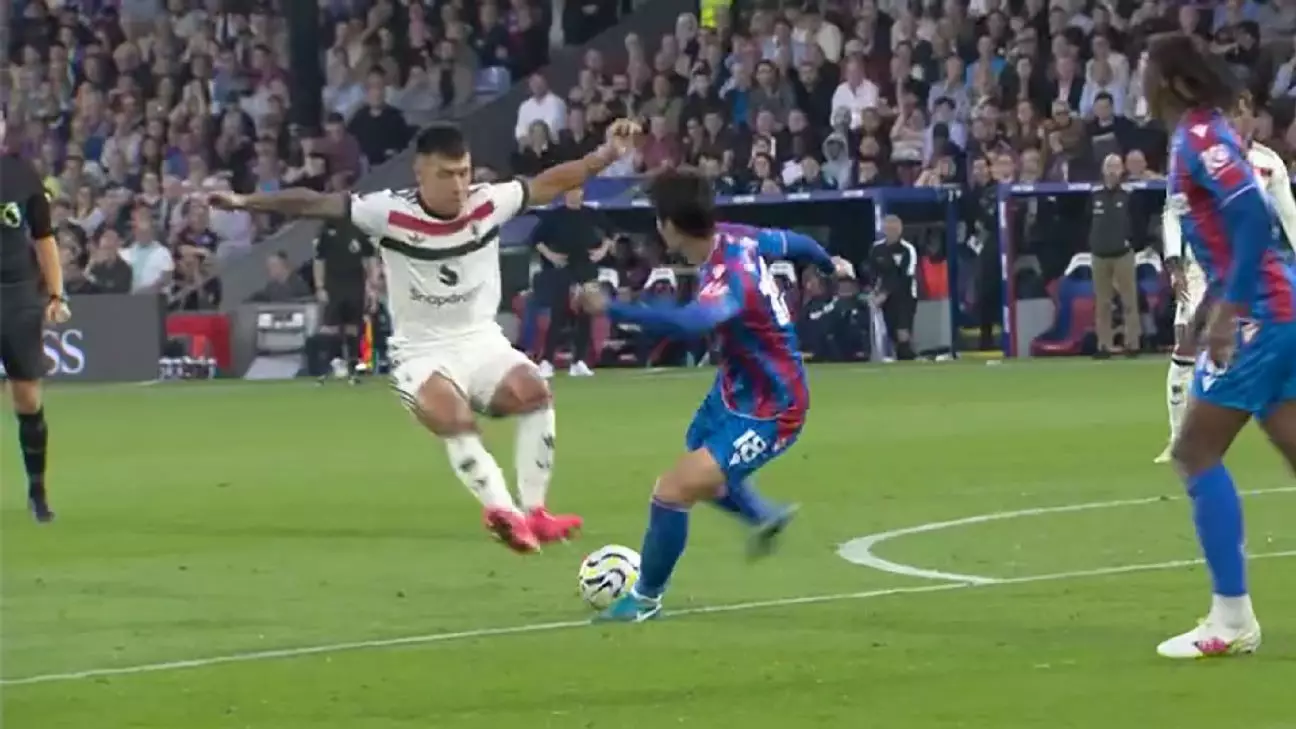The implementation of Video Assistant Referee (VAR) technology has been a source of heated debate within the Premier League, leading to discussions concerning the accuracy of decisions and the overall integrity of the game. This piece seeks to analyze some recent controversial VAR decisions, shedding light on the intricacies involved in the decision-making process and how these decisions align with the Laws of the Game.
VAR was introduced to enhance the objectivity of refereeing by allowing for video reviews of key match incidents, including goals, penalty calls, direct red card incidents, and mistaken identity. However, the effectiveness of this system often hinges on how these incidents are interpreted by the on-field officials and the VAR team. Critical moments in recent matches highlight how VAR’s influence can lead to confusion and dissatisfaction among fans, players, and pundits alike.
During a recent match between Manchester United and Crystal Palace, a pivotal incident involved United’s Lisandro Martínez. In the 63rd minute, when Martínez challenged Crystal Palace midfielder Daichi Kamada, the decision came under scrutiny. The referee awarded a yellow card to Martínez despite what appeared to be a two-footed challenge. The VAR, Chris Kavanagh, upheld this decision, citing a lack of contact.
However, this raises vital questions about the interpretation of “endangering the safety of an opponent” under the Laws of the Game. The fact that Martínez executed a two-footed challenge provides grounds for a red card, even without direct contact. This inconsistency in decision making leads one to wonder whether an overarching narrative about player safety is being overlooked, ultimately resulting in a significant error in judgment.
Another arena where VAR’s limitations become apparent is in handball calls. In a subsequent incident, Manchester United had a corner that deflected off the arms of players Maxence Lacroix and Jefferson Lerma, leading to no penalty being awarded. The VAR opted against intervention, adhering to a more lenient interpretation of handball. In contrast, the previous season had seen stricter enforcement, requiring a more blatant handball to warrant a penalty.
This inconsistency calls attention to the ambiguous nature of officiating in football, particularly the lack of clarity regarding what constitutes a handball. As seen, VAR has adopted a “high bar” approach, which often leaves players, coaches, and fans puzzled about what can result in a penalty. The disparity in enforcement from season to season exacerbates frustrations and contributes to a growing belief that the intentions behind VAR have become muddled.
One notable incident involved Arsenal’s Gabriel Martinelli and Manchester City goalkeeper Éderson during a match where a goal was scored amidst concerns of a foul. Martinelli appeared to create an obstruction that would have warranted a foul in many European leagues but was deemed acceptable in the Premier League. This discrepancy in officiating standards raises concerns about the potential bias toward English football’s long-standing traditions, which may inadvertently undermine player safety and the spirit of fair play.
Furthermore, Tottenham’s Guglielmo Vicario faced scrutiny during a separate match after handling the ball outside his area. Despite this being viewed as a potential denying of an obvious goal-scoring opportunity (DOGSO), the decision was not upheld. The criteria for DOGSO in conjunction with a goalkeeper’s actions continues to generate debate, illustrating how intricate interpretations of the laws can lead to varied judgments in seemingly similar situations.
The crux of the debate surrounding VAR often hinges upon the subjective nature of many decisions. The division between a successful penalty appeal and a rejected one often relies on minute observations which could easily sway based on the perspective of an individual referee or VAR operator. For instance, in the match where West Ham United appealed for a penalty after an alleged foul by Chelsea’s Wesley Fofana, the VAR deemed the player’s hold to be insignificant. This reflects how human interpretation remains a central aspect of officiating, despite technological assistance.
Many instances echo a similar sentiment: VAR appears to have exacerbated the issue of inconsistency rather than mitigate it. With subjective determinations remaining influential, fans and players alike are left feeling disenfranchised by decisions that seem both disputable and arbitrary.
While VAR has been introduced to enhance the fairness of football, the execution of its principles often reveals a fundamental struggle against human interpretation biases. As recent Premier League episodes have illustrated, a lack of consistency in decision-making continues to elicit dissatisfaction and confusion. Ultimately, for VAR to fulfill its intended purpose, a stronger alignment between technology, interpretation of laws, and overall officiating standards must be prioritized. Only then can the integrity of the game remain intact, and the essence of fair competition be preserved.

Leave a Reply